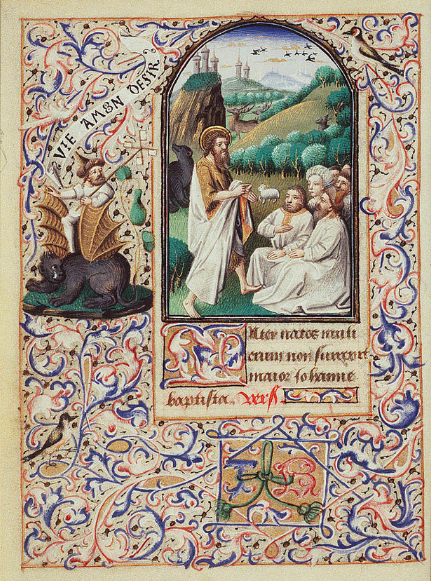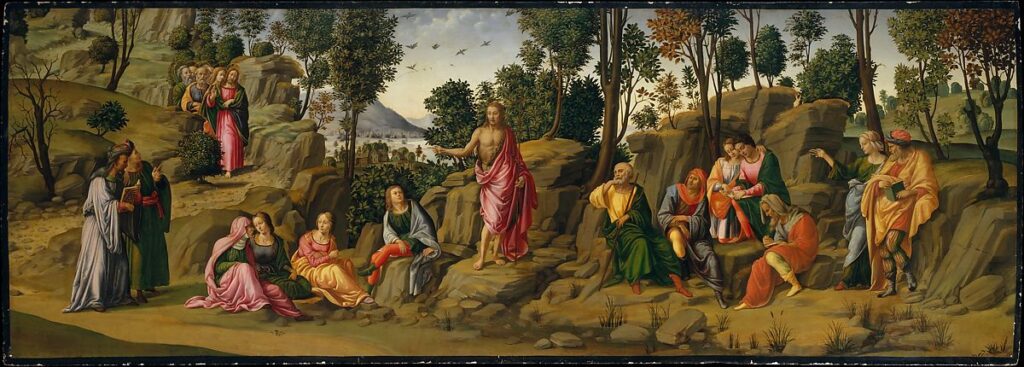“Rejoice in the Lord”

The average Lutheran who walks into a traditional Divine Service on Gaudete, the third Sunday in Advent, is almost certain to notice a variety things about it that are somewhat outside of the usual. Immediately upon entering the church, he may notice that the paraments and vestments are a somewhat peculiar color: rose. Or even if the color in his congregation is the same as the other Sundays in Advent, it is likely that the one rose-colored candle is lit on the Advent wreath. Then comes the Introit, “Rejoice in the Lord always…” drawn not from the Psalms like most Introits but from Philippians, making it one of the only Introits to feature a New Testament text.
These seeming abnormalities betray the exceptional character of this Sunday: a time of rejoicing in the midst of repentance. Thus, even as the Christian experiences the historic penitential season of Advent, the Church turns his focus on this Sunday especially to the joy that can be found in her Lord even during times of profound penitence and solemnity.
It is hard to think of a more emblematic lesson for such a day than the assigned Gospel lesson from Matthew 11, which begins with St. John the Baptist, a representative of repentance and consequently a historic symbol of the Advent season. Even as John beholds his Lord’s first Advent, he experiences the suffering that comes for all of us in the present evil age—in his case, a jail sentence. Yet even in the midst of repentance and suffering, our Lord points him to reasons for rejoicing:
“The blind receive their sight and the lame walk, lepers are cleansed and the deaf hear, and the dead are raised up, and the poor have good news preached to them. And blessed is the one who is not offended by me.”
Thus, in the story of St. John the Baptist and the experience of Gaudete, Christians are reminded of the joy that they have in the coming Lord because even when our grief over our own sins and the suffering of the world is at its highest, we hear the good news preached to us: our Lord Jesus has come to restore his creation and will come again to bring about an age where the blind see, the lame walk, and all the dead are raised up to live with him eternally.
Brief History
Gaudete has retained its rather peculiar character as a Sunday of rejoicing in the midst of the Advent season at least since the Middle Ages. In this it mirrors another Sunday of the Church year: Lætare, a Sunday with a name that, like Gaudete, means “Rejoice.” Indeed, these two days of rejoicing fall just after the middle of each of the Church’s two penitential seasons—Advent and Lent—so many writers throughout the centuries have commented on the parallelism between the two.

This joyful character shared by the two Sundays is the reason for one of its most well-known features: the color rose. While it may seem strange to us at first to use rose for a liturgical occasion, the reasoning behind the color scheme goes back to the medieval West, where the customary color of both penitential seasons was purple.
In those days, rose was frequently seen as a lighter shade of purple—much as pink is often seen today as a lighter shade of red—so the color rose came to symbolize these two days that, while still penitential, were not as somber as the other Sundays in their seasons and thus featured a brighter color palate.
Many Lutheran churches (and other churches in the Western tradition) retain the tradition of rose vestments and paraments on Gaudete to this day, though many others use the same color paraments throughout the season of Advent—for some the more historic purple, for others the more recently introduced blue. Yet even in those places where rose is not frequently seen on the altar, the unique color of Gaudete is still often featured in Advent wreaths, where the rose candle is lit specifically on this Sunday as a result of Gaudete’s historically distinctive character.

Collect
Lord, we beseech Thee: give ear to our prayers; and lighten the darkness of our hearts by Thy gracious visitation; who livest and reignest with the Father and the Holy Ghost: ever one God, world without end. Amen.
Lessons
Resources
Issues, Etc. interview with the Rev. David Petersen on Gaudete
Propers found in Daily Divine Service Book: A Lutheran Daily Missal, edited by the Rev. Heath Curtis

Blog Post by the Rev. Will Weedon on Gaudete

Lutheran Witness article by the Rev. Roberto Rojas, Jr., on Gaudete
References:
1. Lindemann, Fred H.. The Sermon and the Propers. Vol. 1: Advent and Epiphany. Concordia Publishing House. 1958.
Images:
1. Saint John the Baptist Preaching to a Crowd, Bernard Lepicié, France, 1729.
2. St. John the Baptist Preaching to a Multitude, Unknown, France, 1455.
3. Saint John the Baptist Bearing Witness, Francesco Granacci, Italy, 1506-1507.
Some links might be affiliate links which means we may receive a small commission at no extra cost to you. As an Amazon Associate we earn from qualifying purchases.




[…] Gaudete, the Advent Sunday of “Rejoice!,” is an especially festive occasion: filled with merriment and excitement as the upcoming Christmastide approaches. The changing colors of the church paraments and vestments, as well as the lighting of the one rose-colored candle on the Advent wreath, remind Christians of the gaiety that surrounds this day that is in the midst of the busy and bustling pre-Christmas season. […]